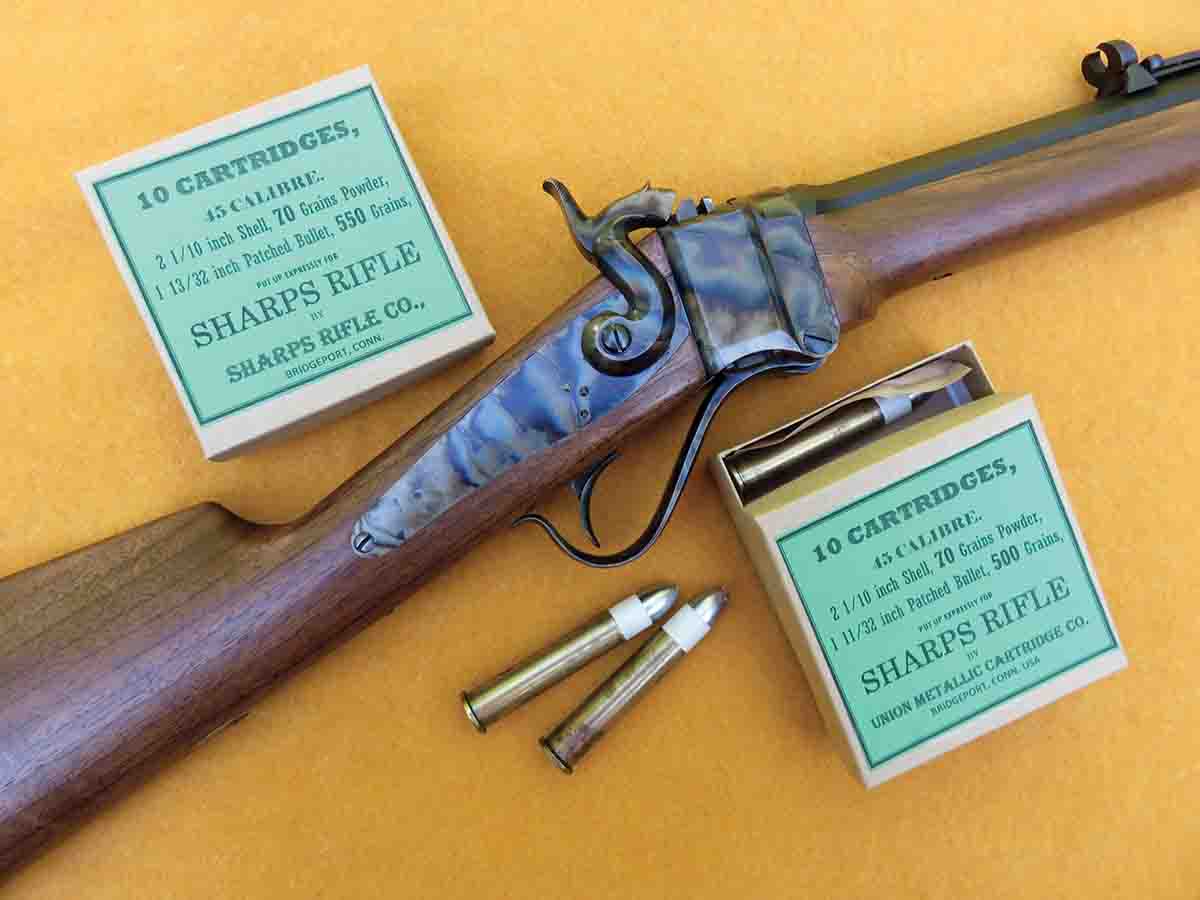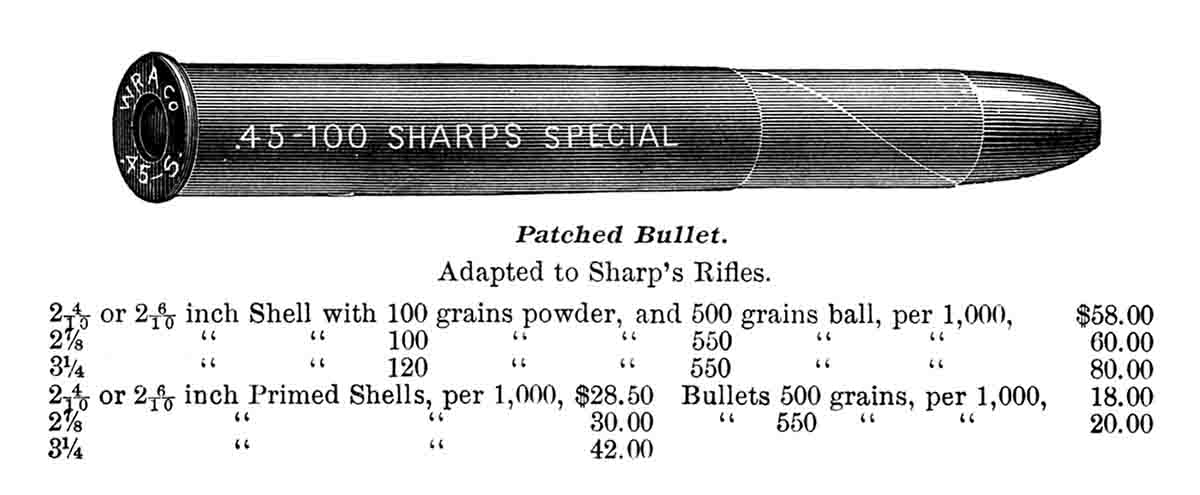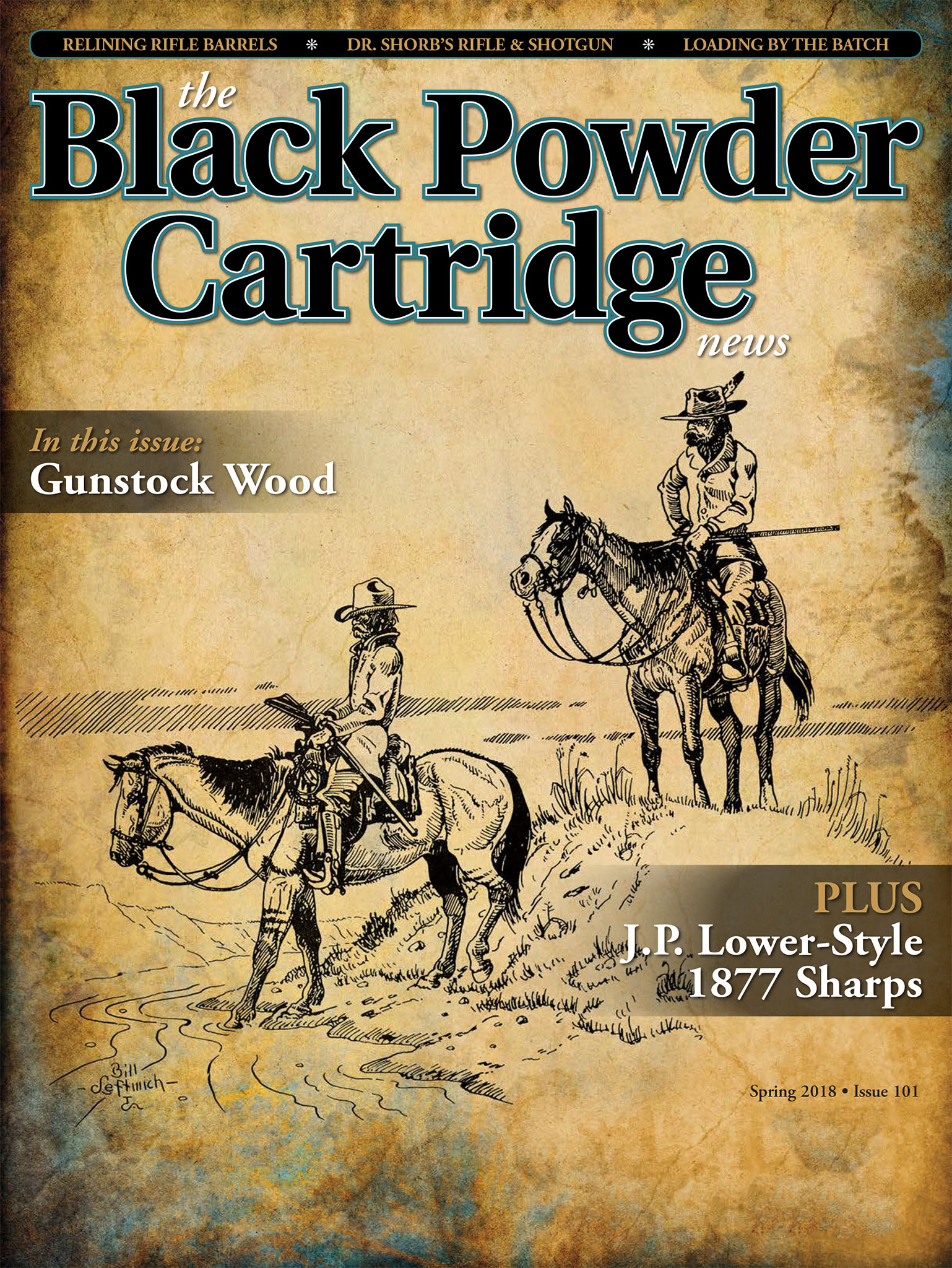The Sharps Model of 1877 is one of the rarest and most beautiful of the old Sharps breechloaders. In the target versions, less than 200 were made. The Model 1877 Lower-Sharps are in a separate listing because they are so different. It was the only sporting rifle made using the ’77 action. These were special rifles, certainly, but they were also on the plain side, although some most likely had some added features, such as checkering or fancy walnut for the stocks. According to Frank Sellers, in his book Sharps Firearms, a total of only 75 Model 1877 Lower-Sharps were made, and they were all shipped to J. P. Lower in Denver, Colorado in 1880.
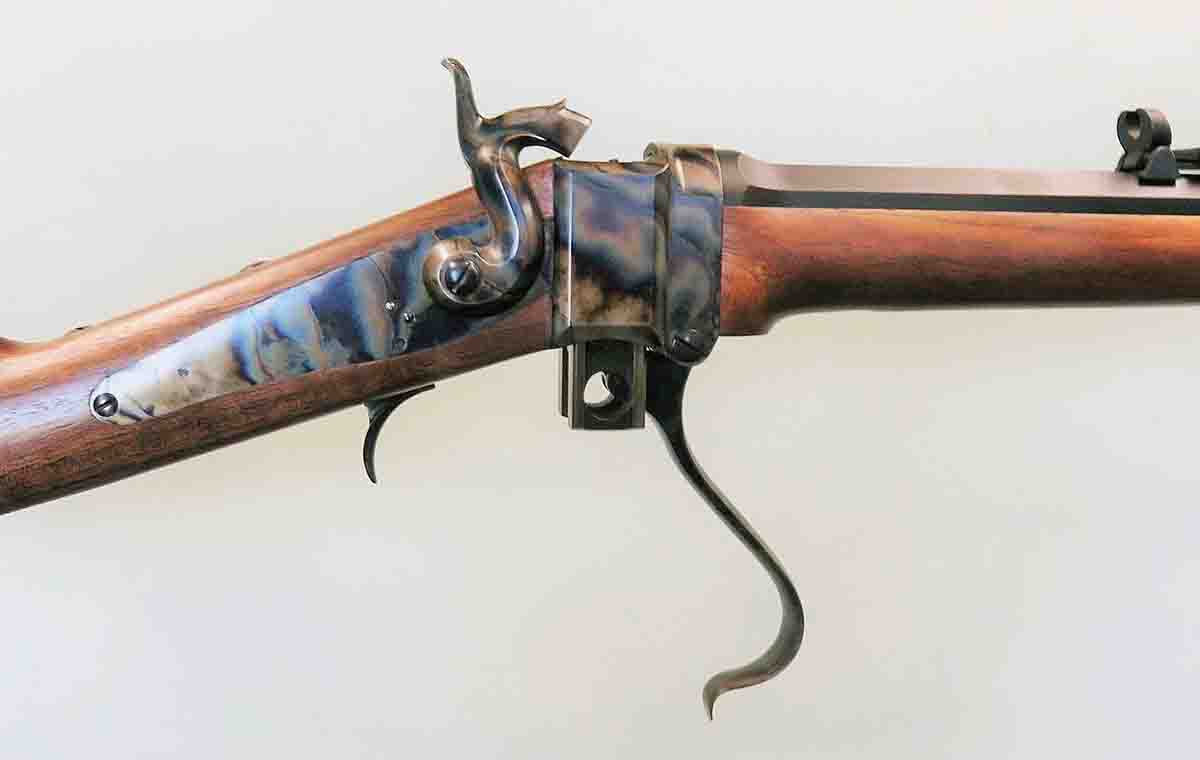
Reducing the weight on the ’77 Sharps action included drilling the breechblocks.
In the 1870s, rules for long-range competition had requirements that limited a rifle’s weight to be no more than 10 pounds. The action on the Sharps Model ’74 was heavy enough by itself that lighter weight barrels had to be used in order to keep the total rifle weight under the 10-pound limit. To solve the problem, a lighter action was developed by removing superfluous metal and that became the Model of 1877. Most of the rather few Model 1877s made were configured as target rifles.
The original 1877 target rifles were generally offered only for the .45 (2.6) and .45 (2.4) cartridges. Those, of course, were .45 caliber with either a 2.6- or a 2.4-inch long cases. Today we call those the “long range” .45-90 and the .45-100 Sharps cartridges. Those titles can be a little deceiving because they were both loaded with 100-grain powder charges underneath 550-grain paper patched bullets.
The Lower-style of the 1877 rifles were very unique because they were made as lightweight sporting rifles. Out of 75 rifles sent
to J.P. Lower, 45 were in .45-70, with either a 28-inch round barrel or a 30-inch octagonal barrel. The other 30 rifles were in .40-70, with 29 octagonal-barrel rifles in .40-70 Sharps Straight and the remaining rifle was a lonely round-barrel gun chambered for the .40-70 Sharps Bottleneck. Fifteen of the rifles had round barrels from the Sharps Business rifles, and the other 60 were made with octagonal barrels.
That, almost in a nutshell, is the history of the Lower-style Sharps Model 1877 rifles. Presenting a short history was simply a way of introducing the real news: C. Sharps Arms is now making Model 1877 Sharps rifles, including the Lower-Sharps 1877, at standard prices. The company is making the Model 1877 Target Rifle (which will be mentioned later), and the main subject for this feature, the J.P. Lower-style 1877 rifle. Both of these new Model 1877 Sharps offerings are featured in the new C. Sharps Arms catalog.

The J.P. Lower-style 1877 Sharps with a 28-inch barrel.
First, let me describe the 1877 Sharps Target Rifle by C. Sharps Arms. This version has a 30-inch tapered octagonal barrel, a single trigger and is drilled and tapped on the tang for the 1877-style tang sight. These are stocked with straight-grained American walnut with a pistol grip and a black, checkered buttplate. The forearm has a schnabel tip. The receiver group, which includes the lock plate and trigger guard, is color casehardened and the barrels are blued. That’s the basic 1877 Target Rifle, but options are available.

The Target version of the Lower-Sharps in .44 caliber.
C. Sharps Arms does not specify calibers or chambering in its description of the 1877s in the new catalog. However, near the back of the small catalog there are a couple of pages dedicated to caliber and chambering availability for all of its rifles including the Model 1877. The target rifle pictured is a .44 caliber which can be chambered for either of the Sharps bottleneck cartridges or the Remington .44-caliber straight cartridges.
Now onto the Lower-style 1877 Sharps rifles. C. Sharps makes this handy rifle available with more options and more chamberings than what was originally made in the late 1870s. The company offers the Lower-style 1877 with a lightweight, octagonal, 26- 28-, or 30-inch barrel. Unfortunately, there is no option on barrel weight. The Lower 1877 Sharps was a lightweight sporting rifle and if a heavier rifle is wanted, take another look at the 1874 models. Like other lightweight rifles, the most recommended calibers for this rifle would be .38-55, .40-65, .40-70 straight or bottleneck and .45-70.

For comparison, a ’74 Model Sharps (top) and a ’77 Lower-style Sharps (bottom).
Remember, the Lower-style 1877 Sharps is not a buffalo gun. It was a lightweight sporting rifle and this new rendition by C. Sharps Arms weighs just 7.5 pounds in .45-70 with a 28-inch barrel. For comparison, I have a rather light Model 1874 by C. Sharps in .45-70 that weighs 9 pounds. The lighter action of the 1877 really makes a difference.
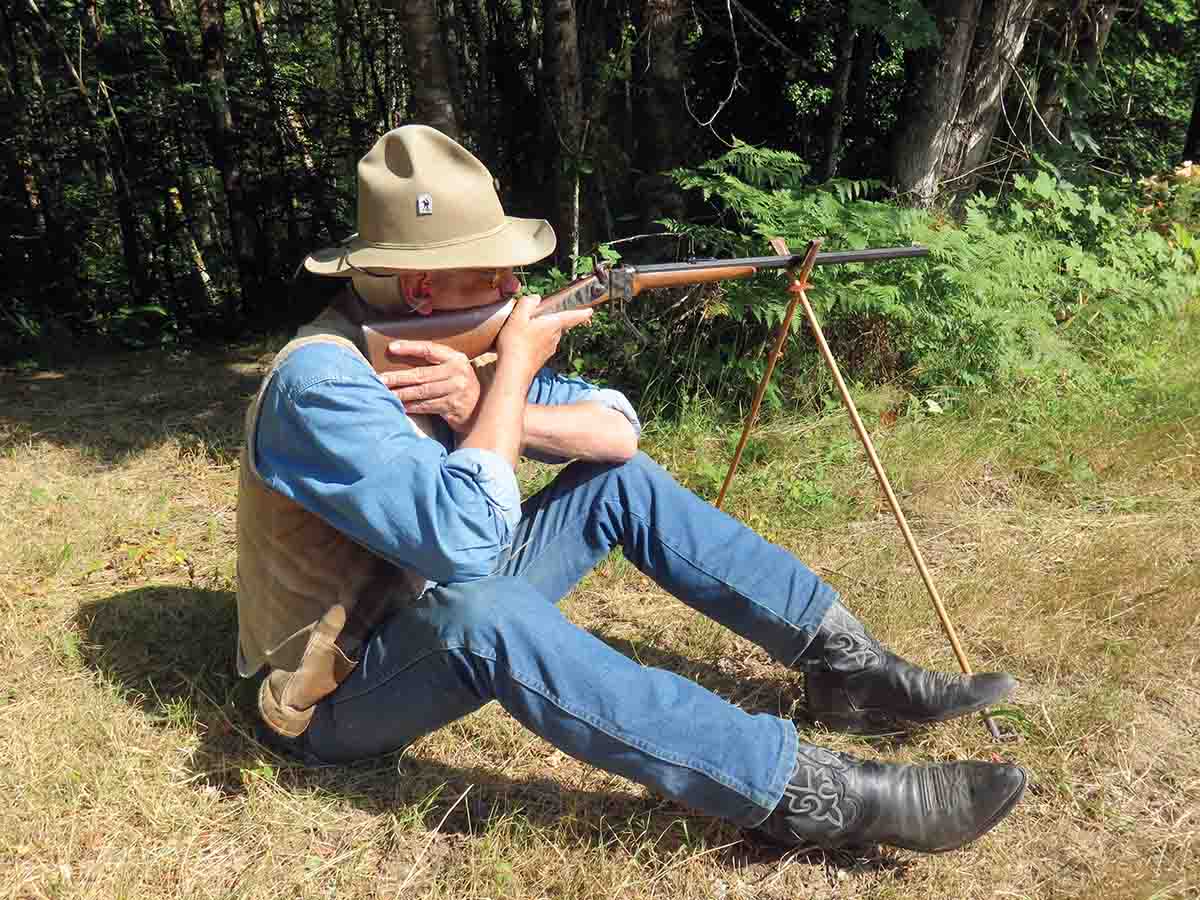
Shooting the C. Sharps Lower-Sharps from the sitting cross-stick position.
Even so, some of the first shots my partner Allen Cunniff and I fired out of this new rifle were “buffalo loads” using 500-grain paper patched bullets over full 70-grain powder charges of Olde Eynsford 2 Fg. powder. Those roared and stomped just like we expected, adding their “underline” to the notes about why the Army went to a carbine load for use in the old .45-70 trapdoor carbines! A little while later, some more comfortable loads using 385-grain bullets from Lyman’s No. 457124 mould were tried as well as some of the Buffalo Arms Company 435-grain “Chicken bullets.” Those were much more pleasing to shoot and they grouped well at 50 yards with the open sights on the barrel. Both of those grease groove bullets were fired over 65 grains of Olde Eynsford 2 Fg.
This rifle had the buckhorn sight on the barrel, but it hit rather low, so we shot the rifle with the rear sight’s ladder raised. If the rifle that was tested had belonged to either one of us, we would have sighted it in by filing down the front sight to make the buckhorn the standard setting for either 50 or 100 yards. By using the raised ladder, the elevation was set where we thought it should be, but sometimes that produced groups either a touch high or
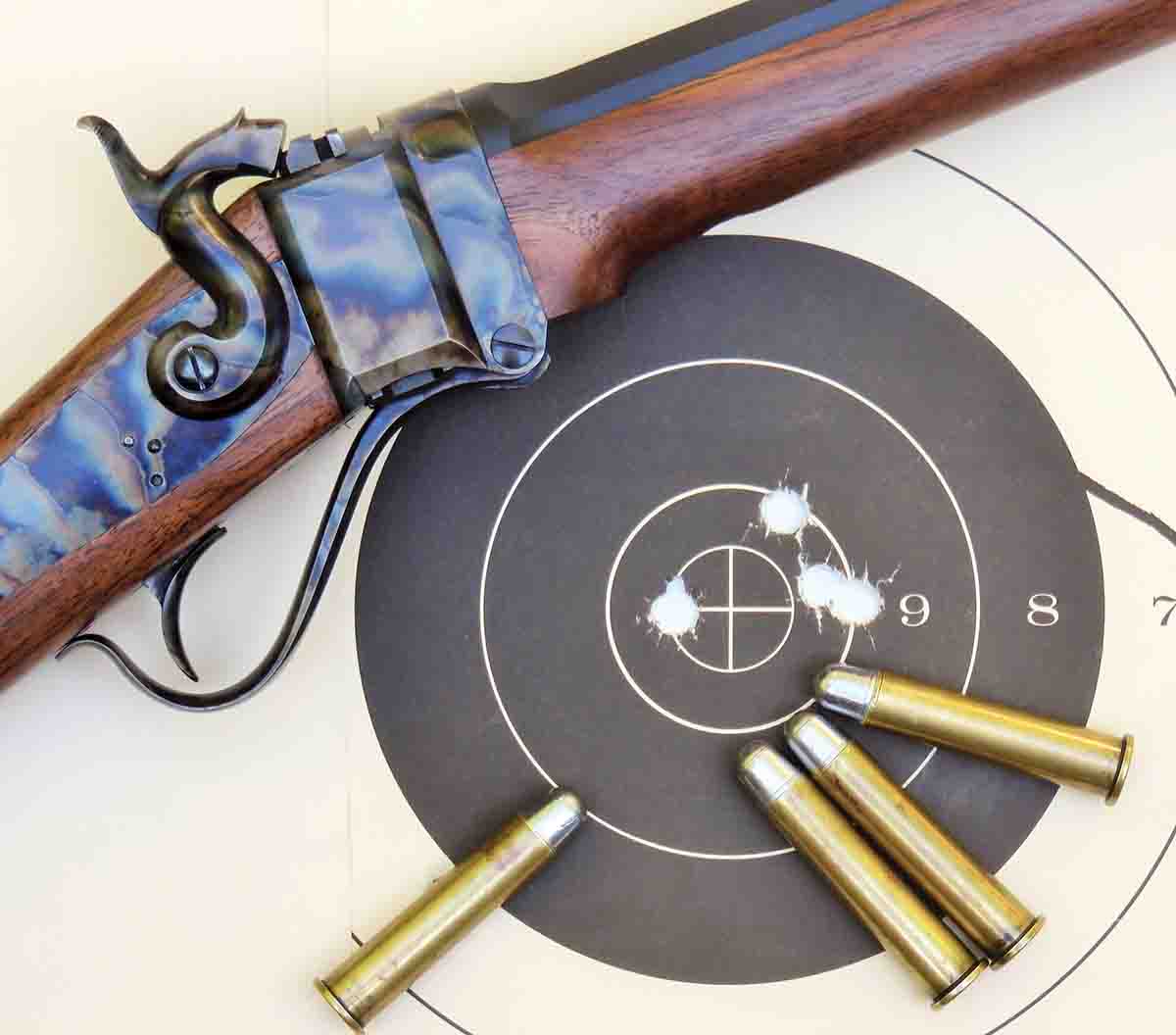
The best five-shot group with the Lower-Sharps using bullets from a No. 457124 mould.
a bit low. Even so, the aiming with that sight was pretty good.
While groups might not be the tightest, please remember that we actually only fired this rifle a few times. In other words, the barrel is still not seasoned or broken-in. For me at least, I would expect to be able to show better targets if a peep sight was used.
Allen shot the new Lower-Sharps from a benchrest. Just to be more traditional, I tried shooting from a sitting position over cross sticks, as I wanted to try the rifle more under field conditions and the cross sticks helped me do that.
Bullets lighter than those from the Lyman mould (about 385 grains) were not tried. One reason was because C. Sharps Arms is using .45-caliber barrels with a 1:18 twist rate in its rifles. The old standard .45-70 was a one-in-22-inch rate of twist. The faster rate of twist is intended for heavier bullets, about 405 grains and up, which is more in tune with today’s black powder cartridge shooting. The 435-grain bullets from the Buffalo Arms Company mould gave us the best general performance even though the 385-grain bullets did give the best individual group, with the 500-grain paper patched bullets coming in close behind.
While shooting this new style rifle, the shotgun-styled lock along with its delicate-looking hammer worked very nicely, and the single trigger was very smooth and light – simply a pleasure to shoot. If all guns had single triggers like the new Lower-Sharps rifles, there would be no need for set triggers. Remember, all Sharps 1877 rifles had single triggers, so I’ll simply suggest that the new Lower-Sharps rifles maintain the old Sharps’ reputation very well.
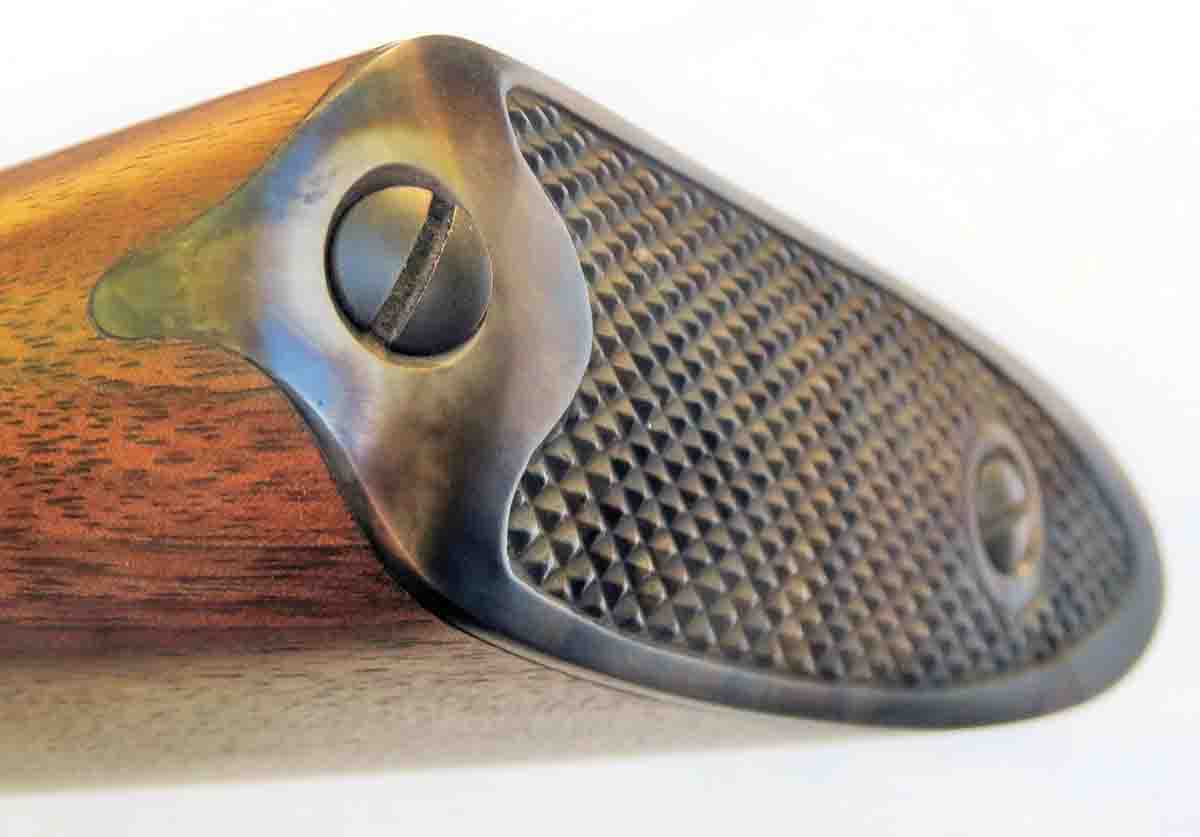
Excellent wood-to-metal fit on the 1877 Sharps Bridgeport-style casehardened buttplate.
The standard prices for the Model 1877 Target rifle begin at $2,590 and for the plain Lower-style 1877 Sharps the beginning price is $2,440. Those prices are certainly “in the ball park” for rifles of this type, competitive with the prices for the Model 1874s. Also, the J. P. Lower-style 1877 rifle shown in the C. Sharps catalog has the added options of hand checkering on the stock plus “hook and eye” sling swivels.
These new versions of the old Sharps Model 1877 rifles are 100 percent American made, built by craftsmen at the C. Sharps Arms shop in Big Timber, Montana. They are hand-fitted and hand-finished, and they really show it. For more information contact C. Sharps Arms at 406-932-4353 or visit www.csharpsarms.com.
